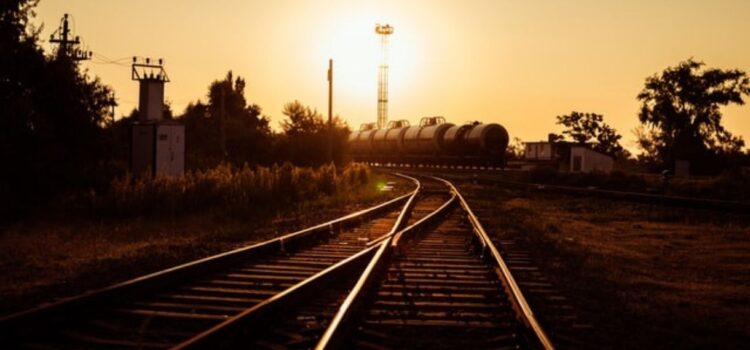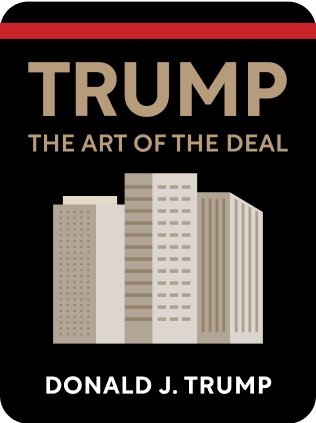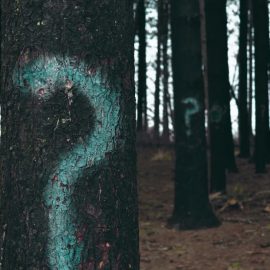

This article is an excerpt from the Shortform book guide to "The Art of the Deal" by Donald J. Trump. Shortform has the world's best summaries and analyses of books you should be reading.
Like this article? Sign up for a free trial here .
What was Donald Trump’s West Side railyards project? What were his development plans for the land?
Having bought the West Side railyards, Trump had ambitious plans for the site. In its place, he wanted to construct the tallest skyscraper in the world; his plans had the building at 150 stories and 1,670 feet tall.
Read about Donald Trump’s West Side railyards project.
West Side Railyards and Trump
Six years after he reluctantly let his option expire to buy the West Side rail yards, Trump bought them back for about $95 million. Compared to the $500 million another developer paid for a smaller site nearby, Trump got a great deal on the West Side yards for several reasons:
- The bank was preparing to foreclose on the seller
- Trump bought the site before it went for sale on the open market
- Unlike other developers, Trump could afford the millions in carrying costs he’d have to pay on the site until he developed it
In the meantime, New York City real estate values had multiplied several times over.
When Trump had the purchase option for the yards a few years earlier, he was a young developer with little money and no track record. This time around, Trump had the benefits of experience, money, and several successful projects.
Trump Benefited from an NYC Outsider’s Mistakes
The property’s seller was a wealthy Argentine bridge builder named Francisco Macri. Macri was generally qualified, but he was new to NYC real estate development.
Macri made several fatal errors in handling the West Side yards project:
- Macri agreed to more than $100 million in concessions and giveaways in order to get his plans approved, including $30 million to renovate a nearby subway station. Macri had no guarantee his profits would cover the millions he’d already promised away.
- During the zoning negotiations, Macri had agreed to conditions that would severely limit his profit potential, such as fewer apartment units.
- Macri did no promotion on his project, despite the fact that he’d have thousands of empty apartments to sell.
Outside circumstances put Macri in a tight financial situation, and he started looking to sell. Trump had already been in contact with Macri, so when the time was right he stepped in and made a $100 million cash deal.
Trump Maximized Assets and Filled Needs
Having finally taken over the West Side railyards, Trump decided to start from scratch; he wanted no association with Macri or his plans. As Trump created his plans, he tailored them to the site’s strengths and area’s needs.
In Trump’s view, West Side railyards’ main asset was its views. His buildings would be tall to maximize the view, and they’d be designed so that every apartment had unobstructed views of the Hudson River or the Manhattan skyline.
Trump also planned to include retail shopping because he knew the area had a dearth of basic shopping options, such as grocery stores and pharmacies.
To ensure a profit from West Side railyards, Trump needed much more generous zoning approvals than Macri had gotten—and he was willing to push as hard and wait as long as he had to in order to get them.
Trump Courted NBC to Leverage Zoning Approvals
To get the zoning approvals he wanted, Trump had to convince city officials that NYC would also benefit from his plans.
Trump found his angle when he learned that NBC was interested in relocating from Rockefeller Center—and that the network was considering a move to New Jersey. If NBC moved across the river to New Jersey, it would hurt New York on multiple fronts:
- Economically: NYC would lose thousands of jobs and hundreds of millions of dollars in annual revenues.
- Psychologically: NYC would lose its claim to the top network and the high-performing shows it produces there, including Today, Late Night with David Letterman, and Saturday Night Live. Part of NYC’s allure was being a media capital, and losing NBC would mean losing a huge player.
Instead, he wanted to court NBC to relocate to the West Side yards. Trump wanted to use this plan to convince the city to approve his zoning. The site had enough space to build larger studios than the network had at Rockefeller Center, and Trump could offer low rent because he’d gotten such a good deal on the land.
and he’d use his plan to
Even if NBC declined, Trump was confident that building studios would be a good investment for his site. So he named it Television City.
Trump Created a Plan That Drew Excitement and Backlash
When the project was done, Trump would have a lot of apartments to fill; he needed to create excitement about the project to draw in buyers. Instead of waiting to promote the units until they were built, Trump wanted to start marketing them right away.
Trump wanted to construct the tallest building in the world, and he knew that would create the buzz he needed. His plans had the building at 150 stories and 1,670 feet tall.
Constructing a building taller than 50 stories generally costs so much that you’re better off building multiple shorter buildings. But in this case, Trump felt that the world’s tallest building would draw enough visitors and profits to justify the expense.
When Trump announced his plans for the site—including the residential units, the commercial and retail space, and the TV studios—the press jumped all over the prospect of the world’s tallest building. Trump had ignited the excitement he’d intended.
Backlash Created More Buzz
Naturally, some of the buzz about the world’s tallest building was negative.
Some felt that building a 150-story building was excessive. Others were convinced Trump wouldn’t be able to build it.
Some—including the New York Times architecture critic—didn’t like that the building would be such a departure from the style of the surrounding neighborhood. However, Trump viewed that as the building’s biggest selling point. Trump had faced the same resistance when he renovated the Commodore and covered the exterior in reflective glass, and most of the criticism ultimately turned around.
The backlash eventually died down, but in the meantime, it brought more attention to Trump’s tallest building in the world.
Trump Played the Game to Get What He Wanted
Progress was held up as Trump waited for the city to approve his proposal.
The City Planning Commission wanted Trump to add several features to his project, including more waterfront access, street extensions, and a relocation of the world’s tallest building farther south.
Trump would fight for his plans, but he also understood he needed to negotiate.
Trump replaced his outside-the-box architect with one who had a track record as an urban planner and had even served on the planning commission. The architect added features to please the city while largely keeping the same total square footage, and the commission responded more positively.
Trump Held Out for What He Wanted
As Trump courted NBC to move to Television City, the network was still considering a site in New Jersey.
NBC was projected to save as much as $2 billion over 20 years if it moved to New Jersey instead of staying in New York. Trump needed the city to approve a tax abatement in order to make NBC a competitive offer.
In a gamble to get the city to sign off, Trump proposed that he’d build NBC’s headquarters in Television City, subsidize its rent for 30 years, and give the city a quarter of Television City’s profits for 40 years. He’d be paying tens of millions a year, and he asked for a 20-year tax abatement on the entire property in exchange.
After weeks of negotiations, the city refused.
A battle ensued between Trump and Mayor Koch that was similar to what happened at Wollman Rink: Trump wrote Koch a letter saying that the city was essentially allowing NBC to leave and, again, Koch responded in a way that further pitted himself against Trump.
The press weighed in, some supporting the mayor and others backing Trump. Ultimately, Trump decided to wait to move forward on the project until he could get the zoning approvals he wanted—regardless of NBC’s decision. At the time of publication, he was still waiting.

———End of Preview———
Like what you just read? Read the rest of the world's best book summary and analysis of Donald J. Trump's "The Art of the Deal" at Shortform .
Here's what you'll find in our full The Art of the Deal summary :
- What Donald Trump says about his early life before the White House
- The 11 principles Trump says guided his business decisions
- How the West Side rail yards project proved to be a challenge for Trump






